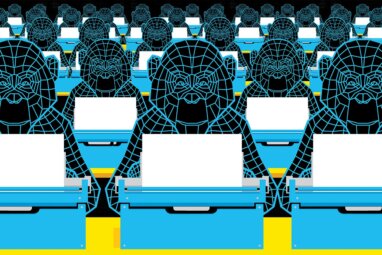Rethinking the Manager’s Role
Technology will not render managers obsolete — but they will need to be more skilled than ever before.
Topics
Frontiers
Editor’s Note: This article is one of a special series of 14 commissioned essays MIT Sloan Management Review is publishing to celebrate the launch of our new Frontiers initiative. Each essay gives the author’s response to this question:
“Within the next five years, how will technology change the practice of management in a way we have not yet witnessed?”
I’ve been thinking about technology and management for over a decade. In the process, I have written two books describing some of the ways that the practice of management will respond to rapid technological innovations. Looking back, I made four predictions about management and technology.
First, it was clear to me that the manager’s role as a coordinator of work would come under increasing pressure. Constant improvements in robotics and machine learning, in conjunction with the automation of routine tasks, make management a more unclear practice. What is a manager, and what is it that managers do? Are we witnessing the end of management?
Next, I could see an inevitable shift in which a parent-to-child way of looking at the relationship between the manager and his or her team would be questioned and ultimately superseded by an adult-to-adult form. The nexus of this more adult relationship concerns how commitments are made and how information is shared. When technology enables many people to have more information about themselves and others, it’s easier to take a clear and more mature view of the workplace. Self-assessment tools, particularly those that enable people to diagnose what they do and how they do it, can help employees pinpoint their own productivity issues. They have less need for the watchful eyes of a manager.
Third, it seemed to me obvious that technology would tip the axis of power from the vertical to the horizontal. Why learn from a manager when peer-to-peer feedback and learning can create stronger lateral forms of coaching? Moreover, technology-enabled social networking is capable of creating robust and realistic maps of influence and power — so no more hiding behind fancy job titles.
Finally, the rise of platform-based businesses such as Uber Technologies Inc. has everyone excited about platforms and how they can create a fertile arena for new businesses to be built while also acting as a conduit for flexible ways of working.






Comments (3)
Knowledge Elisha
mekailahmed16
Martina Wahr